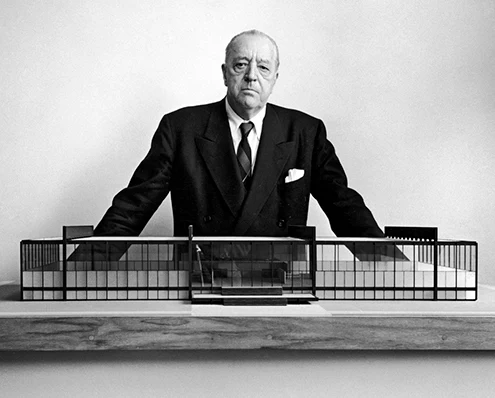- Inicio
- Arquitectura
- _RASCACIELOS
- __Burj Khalifa Dubai
- __Edificio Chrysler, NY
- _Estilos Arquitectónicos
- __Arquitectura Posmoderna
- __Deconstructivismo
- Arte
- _Arte Universal
- _Arte Contemporáneo
- __Serge Marshennikov
- __Damian Lechoszest
- __John Kacere
- _Escultura
- __Venus de Milo
- __Moisés de Miguel Ángel
- __Baldaquino de San Pedro
- __El rapto de Proserpina
- __La Verdad Velada
- __Perseo con cabeza de Medusa
- __Venus de Willendorf
- _Pintura
- __Capilla Sixtina
- __Cuadros Famosos
- __La Creación de Adán
- __Venus del Espejo Velázquez
- __Hipómenes y Atalanta
- __Venus Boticelli
- __Silla de van Gogh
- __Jugadores de Cartas Cézanne
- __Cabeza de Medusa Caravaggio
- __Impresionismo
- __Posimpresionismo
- _Historia
- __Edad Moderna
- Curiosidades
- _Arquitectura y Arte
- _Tumba de Miguel Ángel
- FRASES
- _Frases de la semana
- _Arquitectos
- _Escultores
- __Miguel Ángel Buonarroti
- __Bernini
- __Rodin
- _Pintores
- __Picasso
- __Vincent van Gogh
- __Cézanne
- __Claude Monet
- __Henri Matisse
- __René Magritte
- __Miguel Ángel
- CULTURA
- _Museos
- __Museo del Louvre
- Formación
- _Formación BIM Online
- _Cursos Domestika
- Más
- _ENTREVISTAS
- __Johannes Wesskmark
- __Nathan Zawaya
Lo más visto de la semana!!
RASCACIELOS DESTACADOS EN NY
Rascacielos Postmodernos en EEUU
DESTACADOS AIA 150
- 1.-EMPIRE STATE BUILDING
- 5.-GOLDEN GATE BRIDGE
- 9.-CHRYSLER BUILDING
- 12.-WASHINGTON MONUMENT
- 14.-THE GATEWAY ARCH
- 19.-THE WORLD TRADE CENTER
- 20.-BROOKLYN BRIDGE
- 29.-FALLINGWATER
- 39.-DELANO HOTEL
- 42.-SEARS TOWER
- 44.-WOOLWORTH BUILDING
- 59.-MILWAUKEE ART MUSEUM
- 61.-TRANSAMERICA PYRAMID
- 68.-THE NEW YORK TIMES TOWER
- 71.-HEARST TOWER
- 72.-FLATIRON BUILDING
- 73.-LAKE POINT TOWER
- 125.-CITICORP CENTER
- 129.-WEISMAN ART MUSEUM
- 132.-PENNZOIL PLACE
PUENTES DESTACADOS EN EL MUNDO
FEDERACIÓN MUNDIAL DE GRANDES TORRES
TORRES DESTACADAS EN EL MUNDO
RASCACIELOS DESTACADOS EN CHICAGO
OBRAS DESTACADAS EN EUROPA
OBRAS MAESTRAS DE LA HISTORIA DEL ARTE: ESCULTURA
- Constellation
- El hombre que camina
- El Ángel del Norte
- Chicago Picasso
- Torres de Ciudad Satélite
- La columna sin fin de Brancusi
- Monte Rushmore
- Cristo Redentor Brasil
- El Pensador de Rodin
- La Edad de Bronce (Rodin)
- Estatua de la Libertad
- La musa dormida Brancusi
- Eros y Psique Cánova
- Caballos de Marly
- Éxtasis Beata Ludovica Albertoni
- Fontana de Trevi
- Fuente de los Cuatro Ríos
- Éxtasis de Santa Teresa
- Fuente del Tritón
- David de Miguel Angel
- La Piedad de Miguel Ángel
- David de Donatello
- Laocoonte y sus hijos
- Victoria de Samotracia
- Cariátides
Especial ¿Sabías qué...?
OBRAS DESTACADAS EN ITALIA
Frases Célebres: Arquitectos Famosos
Frases Célebres: Pintores Famosos
Arquitectura, Escultura, Pintura, Ingeniería, Software-Programas de Diseño Arquitectónico: Metodología BIM, Revit, AutoCAD, 3ds max, Animación; Software de Adobe; Cursos online, Libros, Historia, Cultura, Timelapse y Dronelapse sobre Arquitectura y ciudades, Frases Célebres, Curiosidades, Rascacielos, Puentes, Edificios interesantes, Construcciones vanguardistas, Construcciones famosas, Diseño, Arte, Fotografía Arquitectónica / Architecture, Sculpture, Painting, Engineering, Software-Architectural Design Programs: BIM Methodology, Revit, AutoCAD, 3ds max, Animation; Adobe software; Online courses, Books, History, Culture, Timelapse and Dronelapse on Architecture and cities, Famous Phrases, Curiosities, Skyscrapers, Bridges, Interesting buildings, Avant-garde constructions, Famous constructions, Design, Art, Architectural Photography
Frases y citas célebres: Mies van der Rohe
Mies van der Rohe (1886-1969)
Ludwig Mies van der Rohe
Arquitecto, Dibujante, Urbanista, Diseñador, Artista Universal (Arquitectura Racionalista-La Bauhaus-Estilo Internacional) / Architect, Draftsman, Urbanist, Designer, Universal Artist (Rationalist Architecture-The Bauhaus-International Style)
« No conocemos formas, sino tan solo problemas de construcción. La forma no es el objetivo, sino el resultado de nuestro trabajo. Lo que pretendemos es justamente liberar la construcción de la especulación estética y volver a hacer de ella lo que únicamente debería ser, esto es, construcción. » / « We do not know forms, but only construction problems. The form is not the goal, but the result of our work. What we intend is just to free the construction of the aesthetic speculation and to make of it what it should only be, that is, construction. »
« Debíamos distinguir el núcleo de la verdad. Solo las preguntas que se refieren a la esencia de las cosas tienen sentido. Las respuestas que encuentran su generación entorno a esta pregunta, son su aportación a la arquitectura. » / « We had to distinguish the kernel of truth. Only questions that refer to the essence of things make sense. The answers that your generation finds around this question are their contribution to architecture. »
« La arquitectura depende de su época. Es la cristalización de su estructura interna, el lento despliegue de su forma. Esta es la razón porque la Tecnología y la Arquitectura están tan íntimamente relacionadas. Nuestra esperanza es que logren crecer juntas, que algún día una sea el reflejo de la otra. Sólo entonces tendremos una arquitectura digna de su nombre: Arquitectura como un verdadero símbolo de nuestros tiempos. » / « The architecture depends on its time. It is the crystallization of its internal structure, the slow unfolding of its form. This is the reason why Technology and Architecture are so intimately related. Our hope is that they will grow together, that one day one will reflect the other. Only then will we have an architecture worthy of its name: Architecture as a true symbol of our times. »
« Los medios deben ser subsidiarios de los fines y de nuestro deseo de dignidad y valor. » / « The media must be subsidiary to the ends and our desire for dignity and value. »
« La planta libre es una nueva concepción y posee su propia gramática, como un lenguaje nuevo. Muchos creen que la planta libre significa absoluta libertad. Esto es un error de interpretación. La planta libre requiere tanta disciplina y comprensión por parte del arquitecto como una planta convencional. » / « The free plant is a new conception and has its own grammar, as a new language. Many believe that the free plant means absolute freedom. This is an interpretation error. The free floor requires as much discipline and understanding on the part of the architect as a conventional plant. »
« No creo que construir casas empaquetadas sea algo ventajoso. Prefabricar totalmente una casa resulta una restricción innecesaria. El valor de la prefabricación reside en los módulos y es mucho mejor tener elementos prefabricados y concentrase en su desarrollo; así, el arquitecto puede utilizarlos libremente. De otro modo, la arquitectura sería totalmente aburrida. » / « I do not think that building packaged houses mar something advantageous. Prefabricating a house completely results in an unnecessary restriction. The value of prefabrication lies in the modules and much better to have prefabricated elements and concentrate on their development; Thus, the architect can use them freely. Otherwise, the architecture would be totally boring. »
« Hay quienes utilizan puertas de 2,13 m. de altura con un espacio enfoscado sobre el dintel, mientras que a mí me gusta colocar las puertas de suelo a techo. Yo nunca utilizo techos más bajos de 2.44 m.; por lo general, los nuestros tienen 2,54 m. de altura. » / « Some people use 2.13 m doors. of height with a space plastered on the lintel, while I like to place the doors from floor to ceiling. I never use lower ceilings of 2.44 m .; In general, ours have 2.54 m. Tall. »
« Dios está en los detalles. » / « God is on the details. »
« Cada golpe de hacha tiene un significado y hay expresión en cada dentellada de formón. Ahí está depositada toda la sabiduría de generaciones. ¡Qué sentido del material y qué poder de expresión hay en estas casas! ¡Qué calor y qué belleza! Parecen ecos de viejas canciones. » / « Each ax blow has a meaning and there is expression in each chisel bite. There is deposited all the wisdom of generations. What a sense of material and what power of expression there is in these houses! What warmth and what beauty! They look like echoes of old songs. »
« La arquitectura es la voluntad de la época traducida a espacio. » / « Architecture is the will of the time translated into space. »
« Es imposible ir hacia adelante y mirar hacia atrás; quien vive en el pasado no puede avanzar. » / « It is impossible to go forward and look back; who lives in the past can not advance. »
« Mi convicción se estimulaba con las innovaciones de la ciencia y de la técnica donde encontraba sugerencias para mis investigaciones arquitectónicas. Jamás he cedido, pues siempre he creído que la arquitectura no debe guiarse por la invención de formas inéditas ni por gustos individuales. La arquitectura, para mí, es un arte objetivo y debe regirse por el espíritu de la época en que se desarrolla. » / « My conviction was stimulated by the innovations of science and technology where I found suggestions for my architectural research. I have never given in, because I have always believed that architecture should not be guided by the invention of new forms or by individual tastes. Architecture, for me, is an objective art and must be governed by the spirit of the time in which it develops. »
« Si la inspiración es el momento previo a la creación, el detalle constructivo es lo que la hace posible. » / « If inspiration is the moment prior to creation, the constructive detail is what makes it possible. »
« No quiero ser interesante, yo quiero ser bueno. » / « I do not want to be interesting, I want to be good. »
« Espero que nadie se figure que la arquitectura tiene nada que ver con eso de la creación de formas, lo propio de los arquitectos es el orden. » / « I hope no one will think that architecture has nothing to do with the creation of forms, the architects own the order. »
« Es cierto que la educación no se preocupa solamente de objetivos prácticos, sino también de valores. Nuestros objetivos nos aseguran el material de nuestras vidas, nuestros valores hacen posible nuestra vida espiritual. » / « It is true that education is not only concerned with practical objectives, but also with values. Our goals assure us the material of our lives, our values make our spiritual life possible. »
« Una silla es un objeto muy difícil. Un rascacielos es casi más fácil. Por esta razón Chippendale es famoso. » / « A chair is a very difficult object. A skyscraper is almost easier. For this reason Chippendale is famous. »
« Pregunta: Señor Van der Rohe, ¿cómo consigue hacer esas cubiertas planas tan grandes…? -Pues… ¡con goteras! » / « Question: Mr. Van der Rohe, how do you manage to make those flat roofs so big ...? -Well ... with leaks! »
« La arquitectura comienza al colocar cuidadosamente un ladrillo al lado de otro. » / « Architecture begins by carefully placing one brick next to another. »
« En la arquitectura, la cuestión de la proporción no siempre se refiere a la de los objetos en sí, sino, muchas veces, a la proporción entre los objetos. No hay nada, pero aún así existe una proporción. » / « In architecture, the question of proportion does not always refer to the objects themselves, but often to the proportion between the objects. There is nothing, but still there is a proportion. »
« Cuando comenzamos un proyecto no pensamos en la forma, pensamos en el modo correcto de utilizar los materiales; después aceptamos el resultado. Cuando trabajamos dejamos que las grandes ideas se queden en el aire. No queremos que bajen. A menudo nos sorprendemos a nosotros mismos con el resultado. Recopilo los hechos, todos los que puedo conseguir, los estudio y después actúo en consonancia. » / « When we start a project we do not think about the form, we think about the correct way to use the materials; then we accept the result. When we work we let the big ideas stay in the air. We do not want them to go down. We often surprise ourselves with the result. I collect the facts, all I can get, study them and then act accordingly. »
« El arte está en el refinamiento de la construcción. » / « The art is in the refinement of construction. »
« Si se trabaja con la razón y no se tienen ideas arquitectónicas extravagantes, todo sería mucho mejor. En los edificios tengo que hacer lo que tiene que hacerse y no lo que a mí me gusta; simplemente lo mejor que se pueda hacer. » / « If you work with reason and do not have extravagant architectural ideas, everything would be much better. In buildings I have to do what has to be done and not what I like; simply the best that can be done. »
« Nunca hables de arquitectura a un cliente. Háblale de sus hijos; es una buena política. La mayoría de las veces el cliente no entenderá lo que tienes que decir sobre arquitectura. Un arquitecto con recursos debería ser capaz de decir al cliente lo que éste quiere que le diga. En la mayoría de los casos, el cliente no sabe lo que quiere. Cierto es que puede tener algunas ideas muy curiosas, pero al no tener formación arquitectónica, simplemente no puede saber qué es o qué no es posible. » / « Never talk about architecture to a client. Talk to him about his children; It is a good policy. Most of the time the client will not understand what you have to say about architecture. An architect with resources should be able to tell the client what he wants to be told. In most cases, the client does not know what he wants. It is true that he may have some very curious ideas, but having no architectural training, he simply can not know what is or what is not possible. »
« Las cosas se van haciendo mejor y mejor a través del ejemplo. Si no lo hay, entonces la gente únicamente habla; hablan de cosas que no conocen, con lo que de ningún modo pueda juzgar la diferencia entre lo bueno y lo malo. » / « Things are getting better and better through example. If there is not, then people only talk; They talk about things they do not know, so that they can not judge the difference between the good and the bad. »
« Creo que uno no puede conseguir una expresión clara de nuestro tiempo si no es capaz de utilizar una disciplina constructiva clara. » / « I believe that one can not get a clear expression of our time if one is not able to use a clear constructive discipline. »
« Estoy convencido de que la arquitectura no puede ser otra cosa que la expresión de una civilización. La expresión de la esencia de esa civilización. » / « I am convinced that architecture can not be anything other than the expression of a civilization. The expression of the essence of that civilization. »
« Yo suelo comparar la arquitectura con el lenguaje. Para dominar verdaderamente un idioma, uno debe dominar su gramática. Entonces uno podrá expresarse con claridad. Uno puede decir cosas muy normales en un idioma; uno puede enunciar cosas muy lógicas; y, si uno es poeta, incluso puede expresar cosas artísticas en un idioma. Y yo creo que en la arquitectura ocurre exactamente lo mismo. » / « I usually compare architecture with language. To truly master a language, one must master its grammar. Then one can express oneself clearly. One can say very normal things in a language; one can enunciate very logical things; and, if one is a poet, he can even express artistic things in a language. And I believe that exactly the same thing happens in architecture. »
« La esquina es el origen de los problemas. » / « The corner is the source of the problems. »
« Menos es más. » / « Less is more. », Mies Van der Rohe
Related post / Entradas relacionadas
Seagram Building
Manhattan, New York City, USA
Mies van der Rohe/Philip Johnson
Philip Johnson
Especial Frases célebres
Le Corbusier
Especial Frases célebres
LIBROS RECOMENDADOS

Arquitectura Moderna de la A a la Z
Editado por Laszlo Taschen
Tapa dura, estuche con 2 vols., 23,8 x 30,5 cm, 592 páginas
(Libros TASCHEN - TASCHEN Books)
COMPRAR

Bauhaus
Magdalena Droste
Tapa dura, 25 x 34 cm, 400 páginas
(Libros TASCHEN - TASCHEN Books)
+ info COMPRAR

Mies van der Rohe
Claire Zimmerman, Peter Gössel
Tapa dura, 21 x 26 cm, 96 páginas
(Libros TASCHEN - TASCHEN Books)
COMPRAR
¡Hola y bienvenido/a!
Gracias por visitar mi blog sobre Arquitectura y Arte: www.jmhdezhdez.com. Aquí comparto mi pasión por el diseño, la creatividad y las últimas tendencias en el mundo de la arquitectura. Si deseas seguir mi trabajo y proyectos, te invito a explorar la continuación natural de este blog en mi nuevo sitio web: ArquitecturaCarreras.com. En este nuevo espacio encontrarás artículos, recursos y novedades que estoy seguro te inspirarán. ¡Te espero allí con muchas novedades!
Gracias por visitar mi blog sobre Arquitectura y Arte: www.jmhdezhdez.com. Aquí comparto mi pasión por el diseño, la creatividad y las últimas tendencias en el mundo de la arquitectura. Si deseas seguir mi trabajo y proyectos, te invito a explorar la continuación natural de este blog en mi nuevo sitio web: ArquitecturaCarreras.com. En este nuevo espacio encontrarás artículos, recursos y novedades que estoy seguro te inspirarán. ¡Te espero allí con muchas novedades!


Arquitectura y Tecnología al servicio del diseño inteligente.
Esta guía esencial para Smart Homes te muestra cómo integrar dispositivos inteligentes en viviendas contemporáneas, mejorando el confort, la eficiencia energética y el diseño funcional. Ideal para arquitectos, interioristas y entusiastas del arte del habitar.
👉 Descubre la guía completa
Fotografía de Arquitectura

Directorio de Fotógrafos de Arquitectura en España: Descubre a los Mejores Expertos en Fotografía Arquitectónica para Documentar tus Proyectos y Obras

Fotografía Arquitectónica: La Guía Definitiva para Capturar Diseño, Estética y Función de Edificios y Estructuras

Fotografía y Vídeo Timelapse

El Rol del Fotógrafo de Arquitectura

Cámaras Réflex y Objetivos Tilt-Shift para Fotografía de Arquitectura
FORMACIÓN BIM MÁS DEMANDADA
Alta tasa de empleabilidad: 8 de cada 10 alumnos de RF AECO con quienes colaboramos logra encontrar empleo antes de finalizar su Curso o Máster. Obtén más información → aquí o descubre la renovada Bolsa de Empleo para alumnos y antiguos alumnos (ALUMNI). A continuación te mostramos los 4 cursos que más demandan los profesionales en la actualidad 2024-2025:
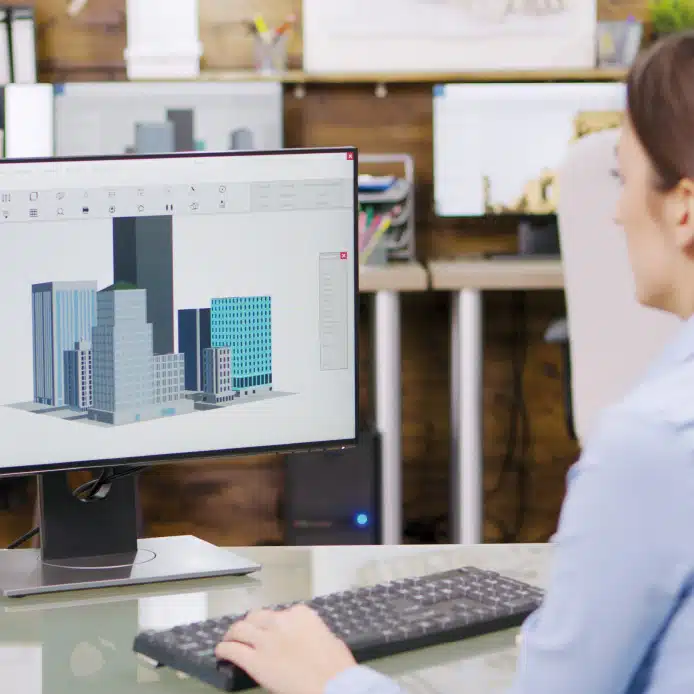
➔ Curso Modelador BIM, especialista Revit – BIM Specialist
Curso de modelador BIM y especialista en Revit, formación avanzada en BIM para profesionales de la construcción. ¡Plazas limitadas! ¡No te quedes fuera!
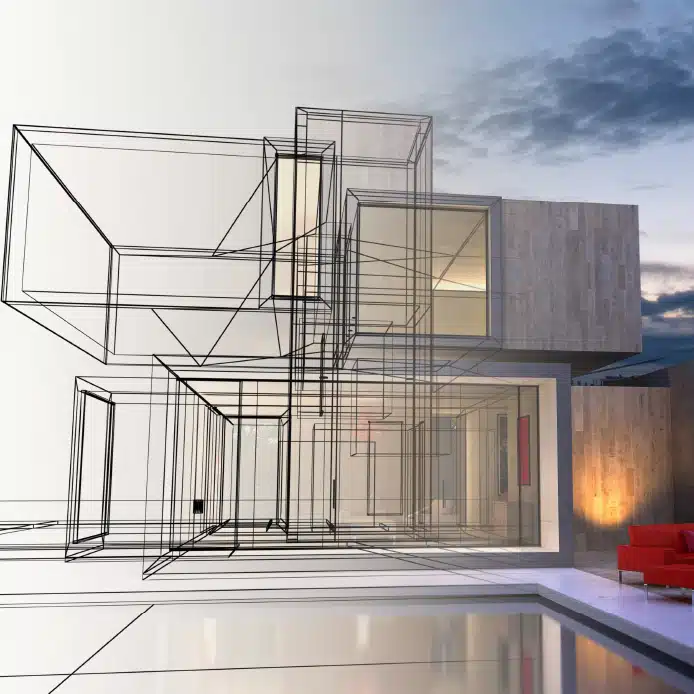
➔ Curso Online Revit Architecture: Essentials v. 2024
Curso online de Revit Architecture Essentials v. 2024, introducción al software Revit para arquitectura.
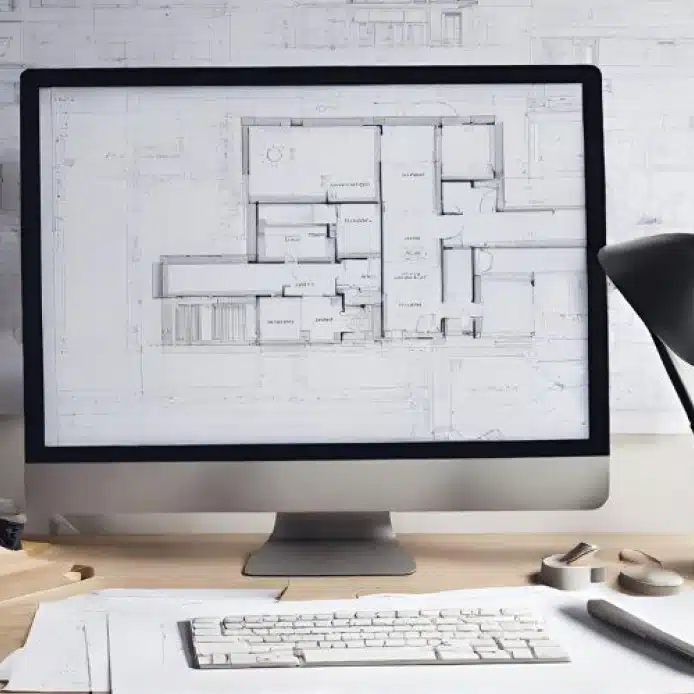
➔ Curso AutoCAD Plant 3D: Modelamiento v. 24
Curso de AutoCAD Plant 3D versión 24, modelamiento avanzado para proyectos de plantas industriales.
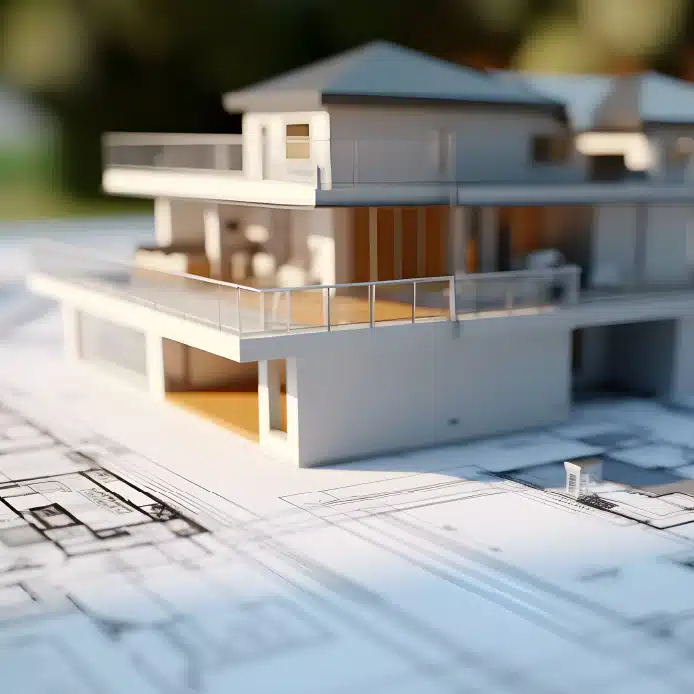
➔ Diseño y Cálculo de Estructuras con CYPE
Curso de diseño y cálculo de estructuras con CYPE, formación en software de ingeniería estructural.
Muy importante! Si tienes dudas o no tienes claro cuál es el curso o máster que más se adapta a tu perfil profesional, escríbeme un e-mail a info@jmhdezhdez.com y estaré encantado de orientarte.

➔ Curso Modelador BIM, especialista Revit – BIM Specialist
Curso de modelador BIM y especialista en Revit, formación avanzada en BIM para profesionales de la construcción. ¡Plazas limitadas! ¡No te quedes fuera!

➔ Curso Online Revit Architecture: Essentials v. 2024
Curso online de Revit Architecture Essentials v. 2024, introducción al software Revit para arquitectura.

➔ Curso AutoCAD Plant 3D: Modelamiento v. 24
Curso de AutoCAD Plant 3D versión 24, modelamiento avanzado para proyectos de plantas industriales.

➔ Diseño y Cálculo de Estructuras con CYPE
Curso de diseño y cálculo de estructuras con CYPE, formación en software de ingeniería estructural.
Muy importante! Si tienes dudas o no tienes claro cuál es el curso o máster que más se adapta a tu perfil profesional, escríbeme un e-mail a info@jmhdezhdez.com y estaré encantado de orientarte.
DESTACADOS EN ARQUITECTURACARRERAS.COM

Estilos Arquitectónicos Modernos: Un Viaje a Través de la Creatividad y la Innovación

ARQUITECTURA CARRERA: Descubre todas las Opciones de la Carrera en Arquitectura y Grados en España

Comparativa de las Mejores Universidades de Arquitectura del Mundo: Internacional, Europa, LATAM

Los Mejores Libros de Arquitectura para Arquitectos

Libros para Estudiar Arquitectura

Libros para Arquitectos Principiantes: Guías y Recursos Esenciales para Comenzar tu Carrera

Los Mejores Libros de Arquitectura para Estudiantes durante la Carrera

Era Digital de la Construcción: Innovaciones Tecnológicas en Arquitectura y Edificación

Comparativa de Los Mejores Ordenadores para Arquitectos en 2024

Las Mejores Laptops para Arquitectura en 2024

Los Mejores Ordenadores de Arquitectura para Estudiantes

Significado de: Términos Clave sobre Arquitectura, Ingeniería y Construcción

Arquitectos: Descubre el Mejor Directorio de Arquitectos que podrás encontrar en Internet (Sólo en AC)
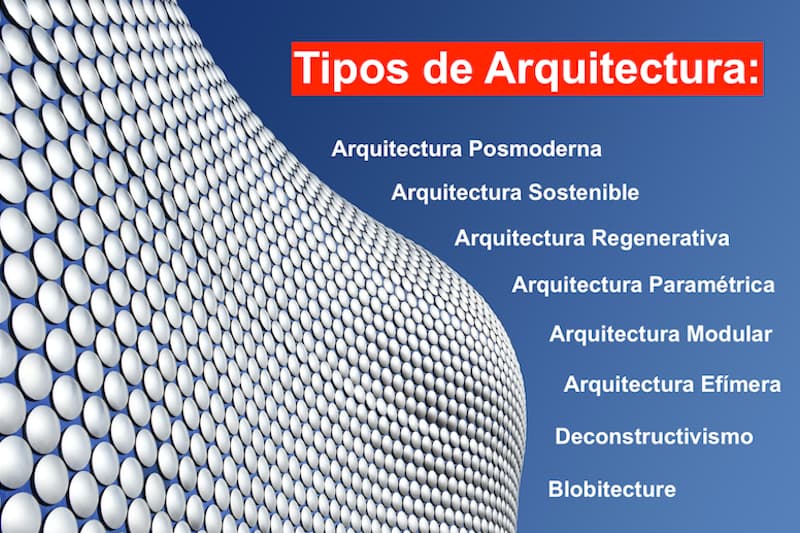
Tipos de Arquitectura: Explorando Más Allá de los Diseños Convencionales

FRASES DE ARQUITECTOS

Roles Arquitectura y Construcción (Profesiones Arquitectura)

Certificaciones para Arquitectos: Avanzando en la Excelencia Profesional

Roles BIM más Demandados en la Industria de la Construcción y el Sector AECO

Software BIM para Proyectos de Arquitectura y Construcción

Tecnología BIM: Beneficios y Ventajas en el sector AECO: Arquitectura, Ingeniería, Construcción y Operaciones

Modelo BIM

Modelo MEP

BIM 3D 4D 5D 6D 7D
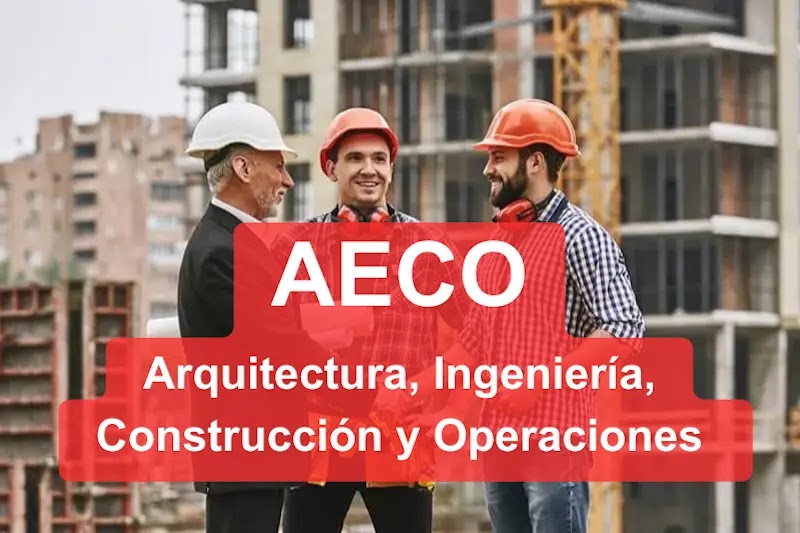
AECO: Sector Arquitectura, Ingeniería, Construcción y Operaciones

Avances Tecnológicos en la Industria de la Construcción
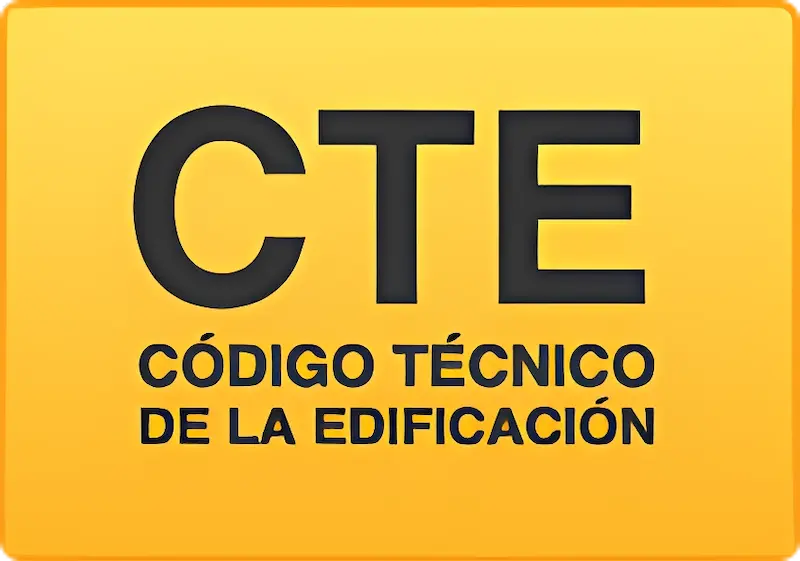
Normas Técnicas de Edificación

!Explora el Mejor Directorio de Construcción! 🚧 🏗️ 👷♂️ (Sólo en ArquitecturaCarreras.com)
Categorías destacadas en el blog!!
▷ LA REVOLUCIÓN DEL BIM.. CURSOS BIM RECOMENDADOS!! RENDERS' FACTORY AECO..
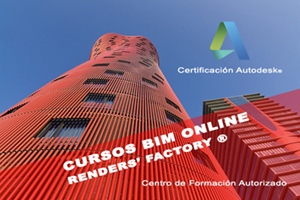
CURSOS BIM ONLINE

▷ Formación BIM
▷ Master en BIM Online
▷ Máster BIM Internacional Oficial Autodesk
▷ Master BIM Manager Online
▷ BIM Expert
▷ BIM Specialist
▷ Curso Revit Arquitectura
▷ Curso familias Revit
▷ De Revit a 3ds Max: Renderizado con V-ray
▷ Curso Revit Estructuras
▷ Curso Revit MEP

Conoce todos los aspectos de la Metodología BIM y Revit
TODOS LOS CURSOS Y MÁSTERES BIM
→ MÁSTERS
→ BIM
→ AUTODESK
→ CYPE
→ DISEÑO MECÁNICO
▷ CURSOS ONLINE RECOMENDADOS!!

- CATEGORÍAS DE CURSOS ONLINE
▷ Formación online
▷ Cursos online
▷ Domestika Cursos
▷ Domestika cupón descuento
▷ Cursos de Arquitectura online
▷ Cursos online de Ilustración
▷ Cursos online de Diseño gráfico
▷ Cursos online de Fotografía y Vídeo
▷ Cursos online de 3D y Animación
▷ Cursos de Diseño online
▷ Cursos online de Dibujo
▷ Cursos online de Bellas Artes
▷ Cursos online de Dirección de Arte
- CURSOS ONLINE DOMESTIKA (POR SOFTWARE)
▷ AutoCAD
▷ SketchUp
▷ 3ds Max
▷ Adobe Photoshop
▷ Adobe Illustrator
▷ Adobe After Effects
▷ Adobe Lightroom
▷ Cinema 4D
▷ Adobe Indesign
LOS MEJORES CURSOS ONLINE PARA CREATIVOS | CURSOS DOMESTIKA
- ÚLTIMAS RESEÑAS CURSOS DOMESTIKA
 ▷ Curso Revit Online, por Majo Mora
▷ Curso Revit Online, por Majo Mora
 ▷ Curso de AutoCAD Online, por Isabel Martínez Abascal
▷ Curso de AutoCAD Online, por Isabel Martínez Abascal
 ▷ Curso SketchUp online, por Alejandro Soriano
▷ Curso SketchUp online, por Alejandro Soriano
 ▷ Curso Infoarquitectura 3D, por Amo Visual 3D
▷ Curso Infoarquitectura 3D, por Amo Visual 3D
 ▷ Curso de Lumion, por Salva Moret
▷ Curso de Lumion, por Salva Moret
MARAVILLAS DEL MUNDO
- CRISTO REDENTOR, BRASIL
- CHICHEN ITZÁ, MEXICO
- COLISEO DE ROMA, ITALIA
- CIUDAD DE PETRA, JORDANIA
- PIRÁMIDES DE GIZA, EGIPTO
- ÓPERA DE SÍDNEY, AUSTRALIA
- EIFFEL TOWER, FRANCIA
- STATUE OF LIBERTY, EE.UU.
- MOÁIS DE LA ISLA DE PASCUA, CHILE
- ACRÓPOLIS DE ATENAS, GRECIA
- TORRE DE PISA, ITALIA
- GOLDEN GATE BRIDGE, EE.UU.
- EMPIRE STATE BUILDING, EE.UU.
- BIG BEN, INGLATERRA
- TORRES PETRONAS, MALASIA
- PUENTE DE CARLOS IV, REPÚBLICA CHECA
- MONTE RUSHMORE, ESTADOS UNIDOS
- MUSEO GUGGENHEIM BILBAO, ESPAÑA
- HOTEL BURJ AL ARAB, UAE
- CAPILLA SIXTINA, ITALIA
- CN TOWER DE TORONTO, CANADÁ
Edificios altos destacados en USA
- ONE WORLD TRADE CENTER, NEW YORK
- 8 SPRUCE STREET, NEW YORK
- AQUA TOWER, CHICAGO
- TRUMP CHICAGO TOWER, CHICAGO
- BANK OF AMERICA TOWER, NEW YORK
- THE CHICAGO SPIRE, (OBRA PARALIZADA)
- THE NEW YORK TIMES TOWER, NEW YORK
- HEARST TOWER, NEW YORK
- ESPIRITO SANTO PLAZA, MIAMI
- MIAMI TOWER, MIAMI
- FOUNTAIN PLACE, DALLAS
- CITICORP CENTER, NEW YORK
- PENNZOIL PLACE, HOUSTON
- SEARS TOWER, CHICAGO
- OLD WORLD TRADE CENTER, NEW YORK
- TRANSAMERICA PYRAMID, SAN FRANCISCO
- JOHN HANCOCK CENTER, CHICAGO
- LAKE POINT TOWER, CHICAGO
- MARINA CITY, CHICAGO
- SEAGRAM BUILDING, NEW YORK
- MILE HIGH TOWER | THE ILLINOIS, (VISIÓN)
- AMERICAN INTERNATIONAL, NEW YORK
- EMPIRE STATE BUILDING, NEW YORK
- 570 LEXINGTON AVENUE, NEW YORK
- CHRYSLER BUILDING, NEW YORK
- WOOLWORTH BUILDING, NEW YORK
- FLATIRON BUILDING, NEW YORK
- HOME INSURANCE BUILDING, CHICAGO
Entradas especiales
MONUMENTOS DESTACADOS EN EL MUNDO
- HSB TURNING TORSO
- CN TOWER, CANADÁ
- ARCO DE ST. LOUIS, MISSOURI
- SPACE NEEDLE, SEATTLE
- TORRES DE CIUDAD SATÉLITE, MÉXICO
- MEMORIAL MONTE RUSHMORE, DAKOTA DEL SUR
- COLUMNA SIN FIN, RUMANÍA
- GOLDEN GATE BRIDGE, SAN FRANCISCO
- EMPIRE STATE BUILDING, NUEVA YORK
- CHRYSLER BUILDING, NUEVA YORK
- CRISTO REDENTOR, RIO DE JANEIRO
- LA PEDRERA, BARCELONA
- EL PENSADOR DE RODIN, PARÍS
- EDIFICIO FLATIRON, NUEVA YORK
- TOWER BRIDGE (PUENTE TORRE), LONDRES
- TORRE EIFFEL, PARÍS
- ESTATUA DE LA LIBERTAD, NUEVA YORK
- HOME INSURANCE BUILDING, CHICAGO
- BROOKLYN BRIDGE, NUEVA YORK
- WASHINGTON MONUMENT, WASHINGTON D.C.
- STATUE OF FREEDOM CAPITOLIO, WA DC
- BIG BEN, LONDRES
- PUERTA DE BRANDENBURGO, BERLÍN
- FONTANA DI TREVI, ROMA
- FUENTE DE LOS CUATRO RÍOS, ROMA
- ÉXTASIS DE SANTA TERESA, ROMA
- FUENTE DEL TRITÓN, ROMA
- PUENTE DE RIALTO, VENECIA
- TUMBA DE MICHELANGELO, FLORENCIA
- CAPILLA SIXTINA, ROMA
- DAVID DE MIGUEL ÁNGEL, FLORENCIA
- PUENTE DE CARLOS, PRAGA
- PONTE VECCHIO, FLORENCIA
- TORRE DE PISA, LA TOSCANA
- MOÁIS DE LA ISLA DE PASCUA, CHILE
- CHICHEN ITZÁ, YUCATÁN
- LAOCOONTE Y SUS HIJOS, ROMA
- COLISEO DE ROMA, ITALIA
- VICTORIA DE SAMOTRACIA, MUSEO DEL LOUVRE
- VENUS DE MILO
- CARIÁTIDES DE ATENAS
- ACRÓPOLIS DE ATENAS, GRECIA
- PETRA, JORNANIA
- EL ESCRIBA SENTADO DEL LOUVRE
- PIRAMIDES DE GIZA, EGIPTO
¿Sabías qué...? muy interesantes! Curiosidades: Arquitectura, Escultura, Pintura y Arte
PUENTES VANGUARDISTAS DESTACADOS
- Infinity Bridge, Stockton
- Juscelino Kubitschek Bridge, Brasilia
- Millenium Bridge, London
- Golden Gate Bridge, San Francisco
- Brooklyn Bridge, New York City
- Megyeri Bridge, Budapest
- Millau Viaduct, Aveyron
- Harilaos Trikoupis Bridge, Athens
- Seri Wawasan Bridge, Putrajaya
- Reiman Bridge, Milwaukee
- UFO Bridge, Bratislava
- Puente del Alamillo, Sevilla
- Sundial Bridge, Redding
- Reggio Emilia Bridges, Bolonia
- Puente del Tercer Milenio, Zaragoza
- Campo Volantin Footbridge, Bilbao
- Puente de la Barqueta, Sevilla
- Humber River Bridge, Toronto
- Puente Bach de Roda, Barcelona
- BP Bridge, Chicago
- Pasarela de la Arganzuela, Madrid
- Erasmus Bridge, Rotterdam
- Puente de la Mujer, Buenos Aires
- Gateshead Millenium Bridge, London
CUADROS FAMOSOS (PINTURA)
- El Guernica (Picasso)
- La Danza (Henri Matisse)
- El beso (Gustav Klimt)
- El grito (Edvard Munch)
- La Noche estrellada (Vincent van Gogh)
- Un baño en Asnières (Georges Seurat)
- Impresionismo (Pintores destacados)
- La Libertad guiando al pueblo (Delacroix)
- Saturno devorando a un hijo (Goya)
- La Joven de la Perla (Vermeer)
- La Venus del espejo (Diego Velázquez)
- La lechera (Vermeer de Delft)
- La ronda de noche (Rembrandt)
- Hipómenes y Atalanta (Guido Reni)
- La Vocación de San Mateo Caravaggio
- Cabeza de Medusa (Caravaggio)
- Frescos de la Capilla Sixtina (Miguel Ángel)
- Almuerzo sobre la hierba de Manet
REFERENCIAS PARA ARQUITECTOS Y ESTUDIANTES DE ARQUITECTURA Y DISEÑO
Arte Contemporáneo
- Johannes Wessmark (Hiperrealismo)
- Jaume Plensa
- Nathan Sawaya (Arte LEGO)
- Serge Marshennikov (Hiperrealismo)
- Escultura Calatrava Chicago
- Bou (Santiago Calatrava)
- Alberto Giacometti
- Frases Pablo Picasso
- El Ángel del Norte (Antony Gormley)
- El hombre que camina I (Alberto Giacometti)
- Chicago Picasso
- Torres Satélite (Luis Barragán)
- John Kacere (Fotorrealismo)
- El Guernica de Picasso
- La musa dormida (Brancusi)
- El Arte de: Damian Lechoszest
- Frescos de la Capilla Sixtina (Miguel Ángel)
- Almuerzo sobre la hierba de Manet
Mitología, Historia, Leyendas
- Lady Godiva
- Eros y Psique
- Hipómenes y Atalanta (Guido Reni)
- La Creación de Adán de Miguel Ángel
- La Piedad de Miguel Ángel
- Arquitectura Postmoderna
- Frases Gaudí
- Los Rascacielos más altos del Mundo
- Todos los ¿Sabías qué...?
- Deconstructivismo
- Burj Khalifa
- Obras destacadas en: El Museo del Louvre
- Famous phrases
- Pensador de Rodin
- Frases Oscar Niemeyer
www.jmhdezhdez.com
(Blog sobre Arquitectura y Arte)
Copyright ©
José Miguel Hernández Hernández. All rights reserved































